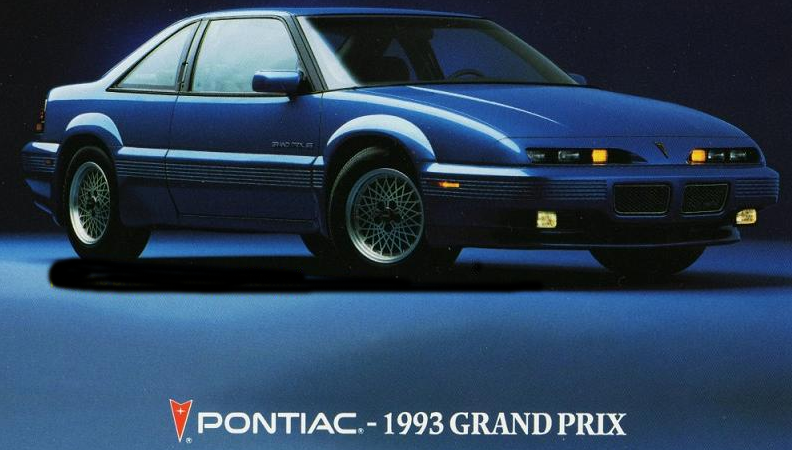
Fact: Ferrari no longer builds cars equipped with manual gearboxes. Most of the Italian sports cars now come with a 7-speed dual-clutch automated-manual transmission that Ferrari—and most buff books—claim produces better acceleration numbers than would a traditional stick shift.
While self-shifters are disappearing from exotic vehicles now, they’ve been becoming scarce in mainstream product for a couple of decades. For example, no domestic-brand midsize sedan can be had with a manual anymore. A couple of estimates put the current take rate on manual transmissions at just under six percent of all new vehicles sold.
Dead-Cat Bounce: Remembering The Last $10,000 Cars
There was a time however, not so long ago, when carmakers kept manuals available in certain models just for the sake of enthusiast credibility. The 1991-1993 Pontiac Grand Prix is just such a vehicle. Here’s the story:
For 1989, All Grand Prix models came standard with a 130-horsepower 2.8-liter V6 mated to a 4-speed automatic transmission. Folks so inclined could order their GPs with a 5-speed manual and enjoy a $615 credit—but only for the sporty, topline SE.
For 1990, the 2.8-liter V6 was ousted, replaced by a trio of engines. Curiously, a 160-horsepower 16-valve “Quad Four” engine was the standard mill, while a new 140-horsepower 3.1-liter V6 was a no-cost option. Even odder, the Quad Four came only with a 3-speed automatic, while the V6 required a $200 upgrade to a 4-speed auto.
A little fun came midyear with the introduction of the STE model. Available only as a sedan, the STE came with either the aforementioned 3.1-liter V6, or a saucy 205-horsepower version of that engine previously seen in the limited-edition 1989 ASC/McLaren Grand Prix. The turbocharged V6 came only with a 4-speed automatic, however.
Grand Prix drivers looking to shift for themselves were limited to the STE equipped with the non-turbocharged V6—not an especially compelling powertrain combination.
Meet The Last Aussie-Built Holden Commodore
Holdouts waiting for the elusive combination of a manual transmission and real power finally got their wishes granted for 1991. New that year was the 24-valve 3.4-liter “Twin Dual Cam” V6. Good for 210 horsepower, the new V6 came standard with a 5-speed manual transmission. Even more interesting, the new V6 was available across the model line. The other Grand Prix engines remained “auto only.”
Contemporary reviews have the 3.4-liter/5-speed Grand Prix reaching 60 mph from a stop in around eight seconds—more than decent performance for the period.
Sadly, customers didn’t really cotton to self-shifting the big V6, and the bulk of Grand Prix models equipped with it were saddled with a 4-speed automatic.
Availability of 3.4-liter/5-speed manual combination was limited to just GT models for 1992 and 1993. Those years, the GT was essentially a 2-door version of the 4-door-only STE. For 1994, the 3.4-liter V6 returned, but the 5-speed manual transmission did not. No subsequent Grand Prix would be equipped with a manual transmission.
Also dead for 1994 was the Quad Four engine and the 3-speed automatic. The Dual Twin Cam V6 would remain a Grand Prix option until the car was redesigned for 1997, after which General Motors’ ubiquitous 3.8-liter “3800” V6 would assume the role of top Grand Prix powerplant.